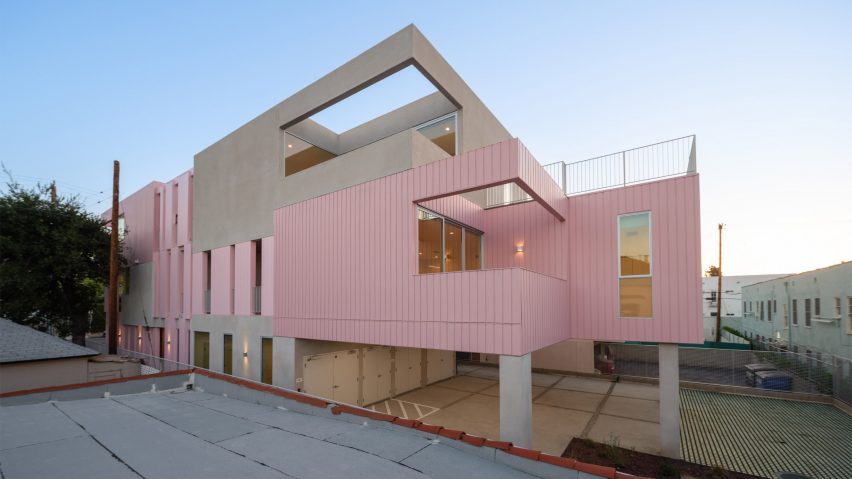
Yu2e draws upon historic styles to create pink housing block in Los Angeles
Architecture and engineering firm Yu2e has completed The Axolotl, a three-storey apartment building near public transit that is meant to be an "evolutionary hybrid of Los Angeles middle housing".
The building is situated on a rectangular property in the Los Feliz neighbourhood, described as a "middle density" area with many two-storey apartment buildings.
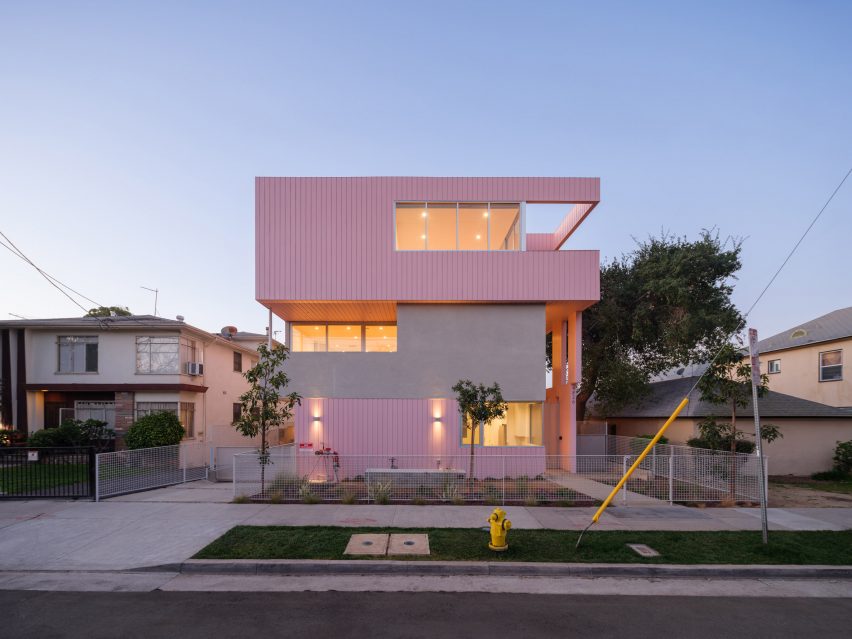
For the 6,750-square-foot (627-square-metre) property, local studio Yu2e conceived a multi-family building with seven rental units.
The firm's design draws upon two historic housing styles found in Los Angeles – the bungalow court, popular in the first half of the 1900s, and the dingbat apartment building, which proliferated in the 1950s and 1960s.
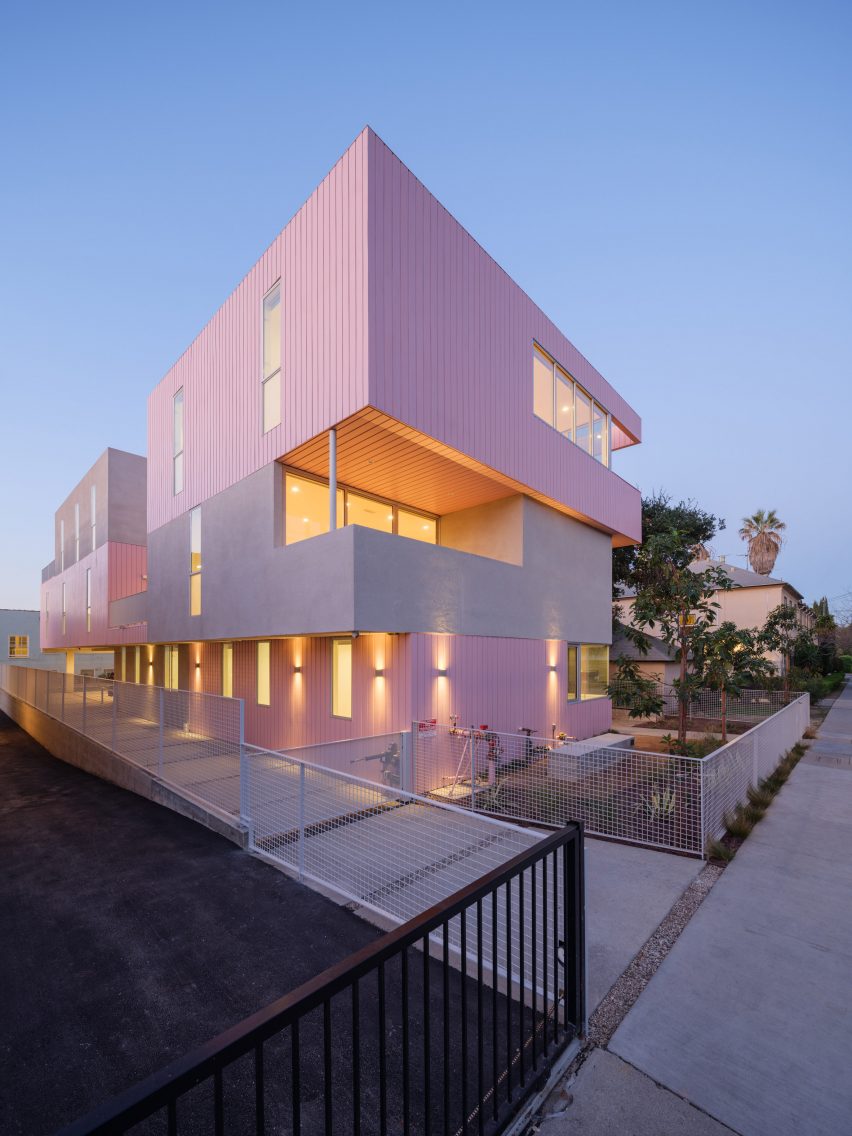
"Many architects in the 20th century had experimented with low-rise housing typologies that would not overwhelm suburban neighbourhoods while providing affordable housing options," Yu2e said.
"With characteristics taken from both bungalow courts and dingbat apartments, our project is an evolutionary hybrid of Los Angeles middle housing."
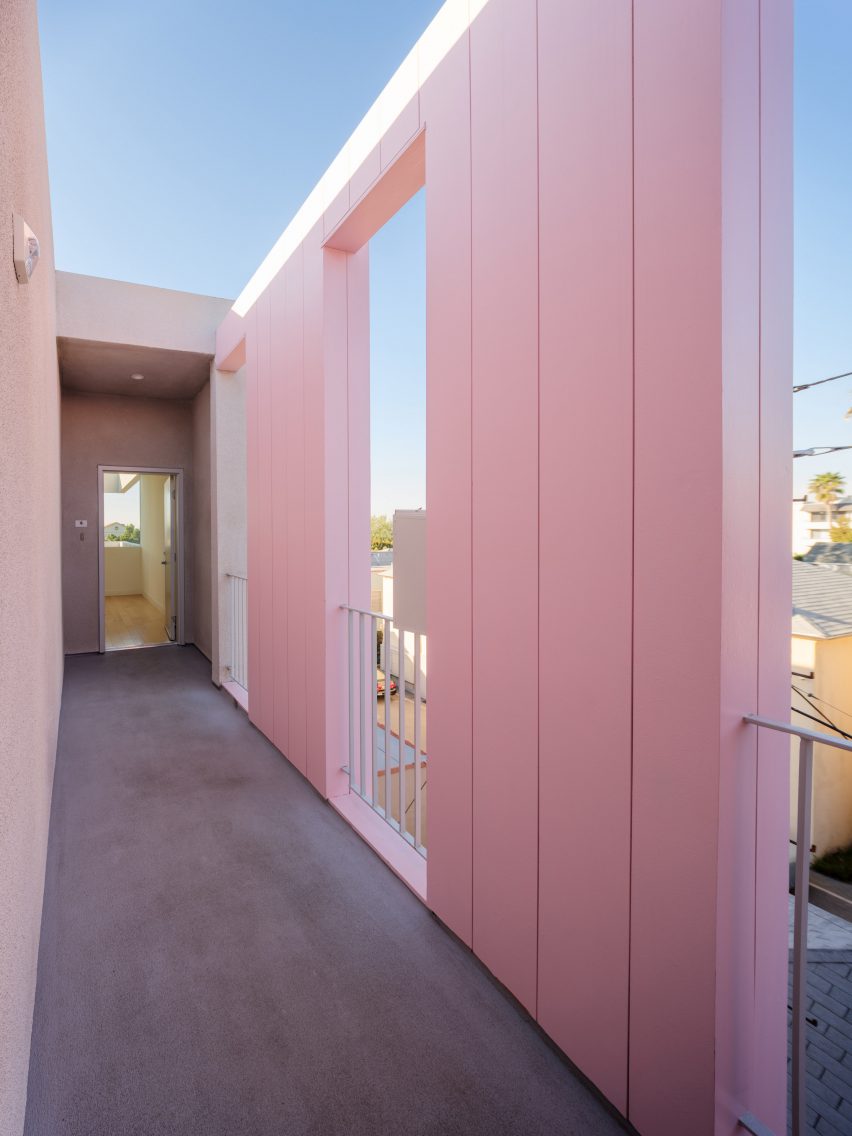
The wood-and-steel Axolotl building rises three levels and totals 10,900 square feet (1,013-square-metre) – the maximum allowed for this type of building per local rules.
The project was developed under the city's Transit Oriented Communities (TOC) Incentive Program, which encourages the construction of affordable housing near bus and train stations. The programme was implemented following a measure passed by voters in 2016.
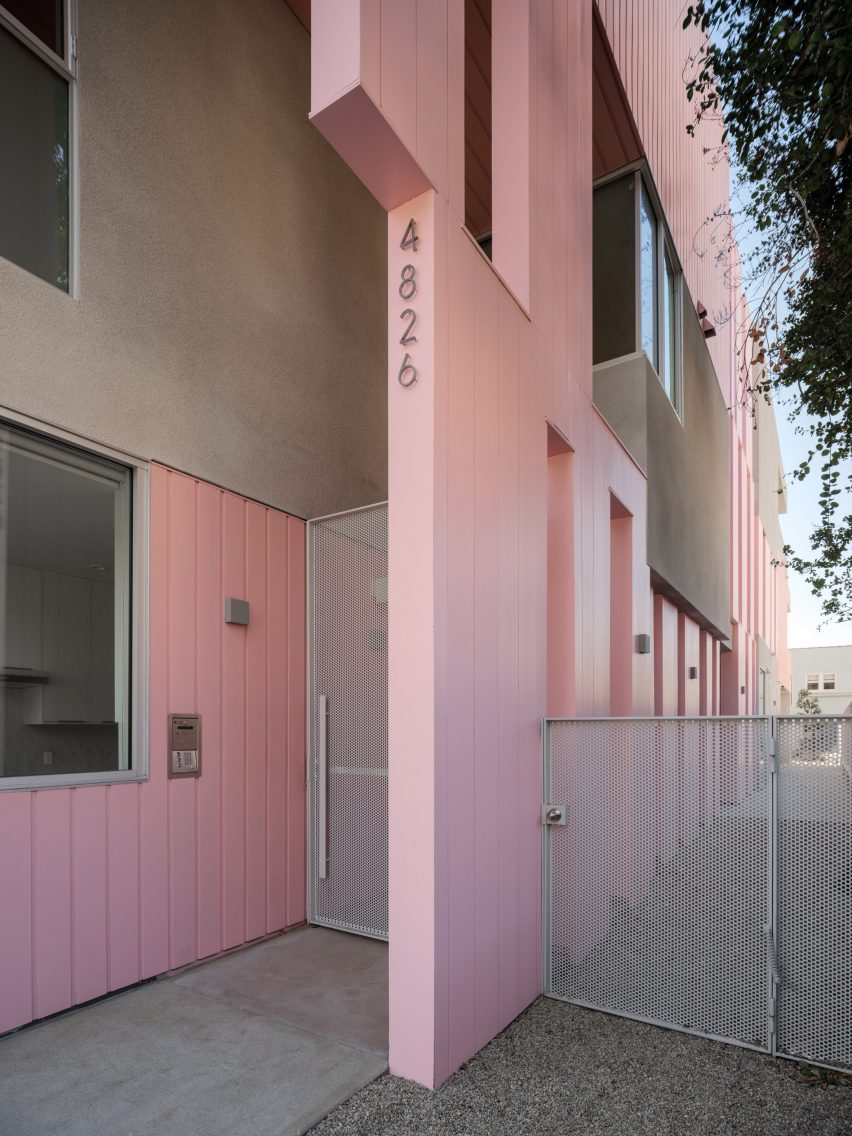
"It is intended to spur multi-family development near public transit by relaxing restrictions like required yards, along with parking and density maximums, in exchange for setting aside some of those units for lower-income households and tenants," said Yu2e of the programme.
Without the TOC programme, the building would have needed to have four apartments and eight parking spaces. The programme enabled the team to add three more apartments and incorporate just four parking spaces.
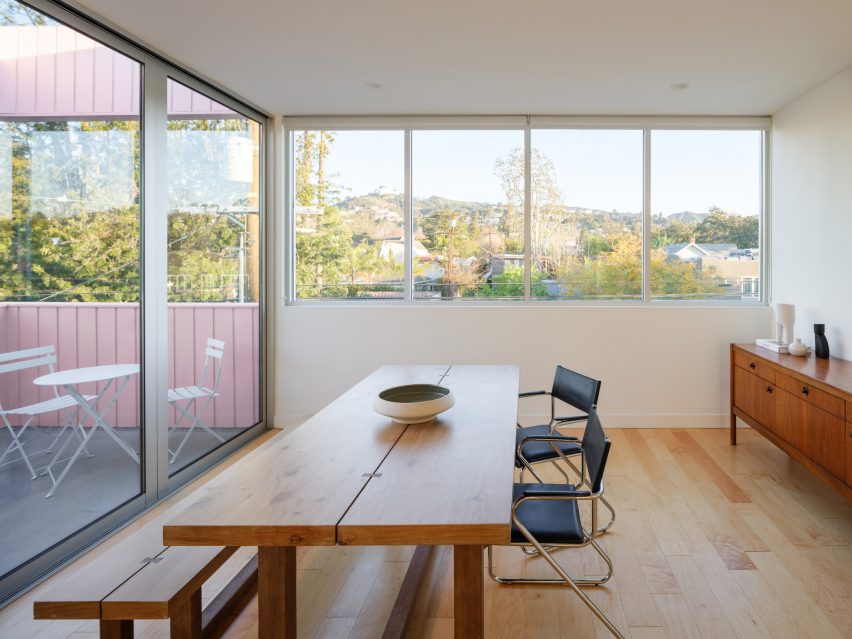
"Our design approach was to maximise the opportunities afforded by the TOC incentives to create more livable dwellings at a more affordable costs," the team said.
In terms of its shape, the building is a box with pieces cut away to form patios and balconies. The outdoor spaces help break up the massing.
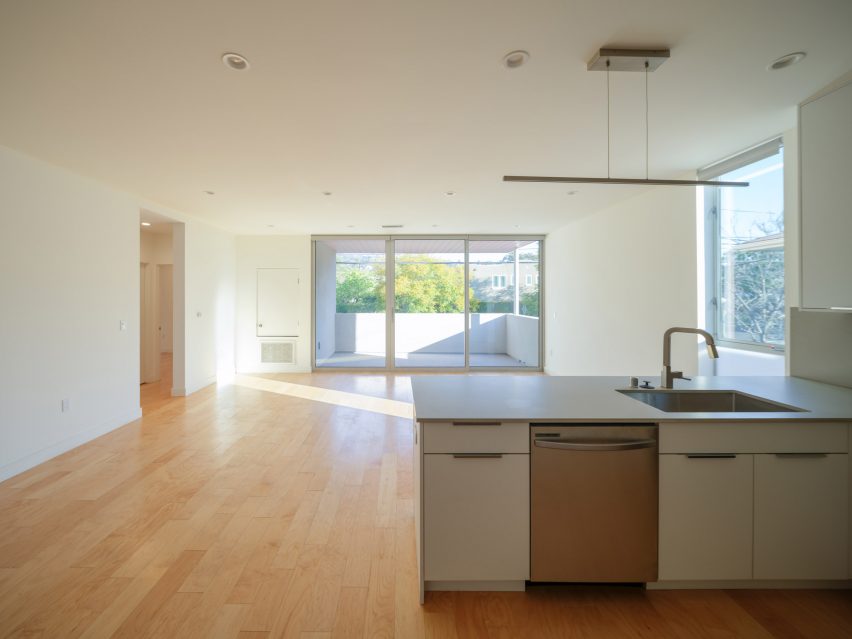
"The tactical distribution of these decks throughout reduced the overall bulk and scale of the building, minimising impact to the street level and adjacent neighbours," the team said.
Exterior walls are clad in a mix of vertical fibre-cement siding and cement plaster.
The developer opted for a pink exterior to help enliven the neighbourhood, while also giving a nod to dingbats, which often had colourful exteriors. The project is named after a pink-hued salamander called an axolotl.
"We like to use fun and approachable names to rebrand our housing projects, as a foil to the typical opposition and criticism of housing projects," said architect Bill Tsui, founder of Yu2e.
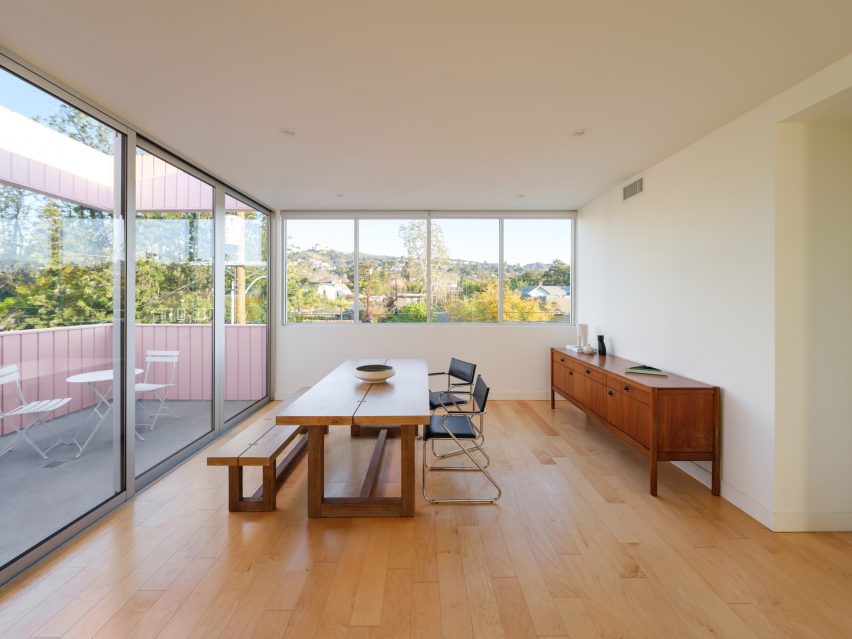
Parking is found in the rear and is reached via a driveway that runs alongside the building. The parking lot includes an electric vehicle charging station and space for bikes.
On the opposing side are corridors that provide access to the apartments.
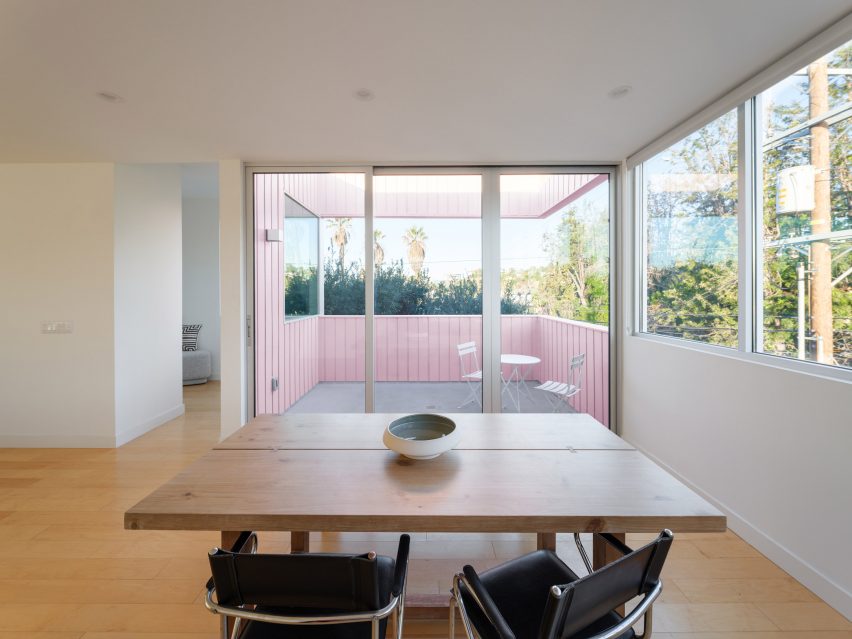
"The common-access corridor is designed to create a sense of community and shared space, by utilising alternating panels and openings in lieu of a typical dark and uninviting double-loaded corridor".
Five of the apartments have two bedrooms, and the remaining two have three bedrooms. One unit is reserved for a low-income tenant.
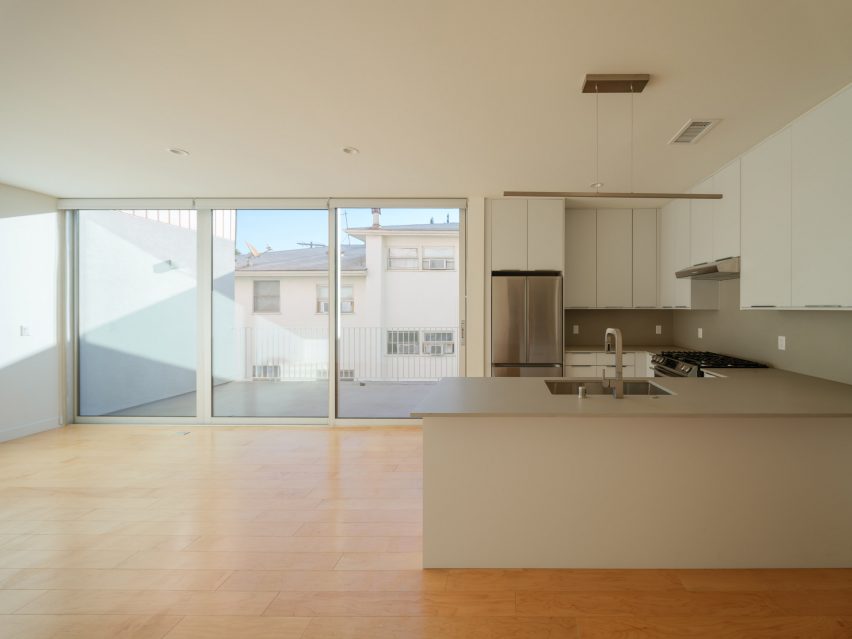
Units are efficiently organised in order to provide open layouts and to keep costs low. Windows and sliding glass doors bring in daylight and facilitate natural ventilation.
Interior finishes include drywall, white oak flooring, laminate cabinets and quartz countertops.
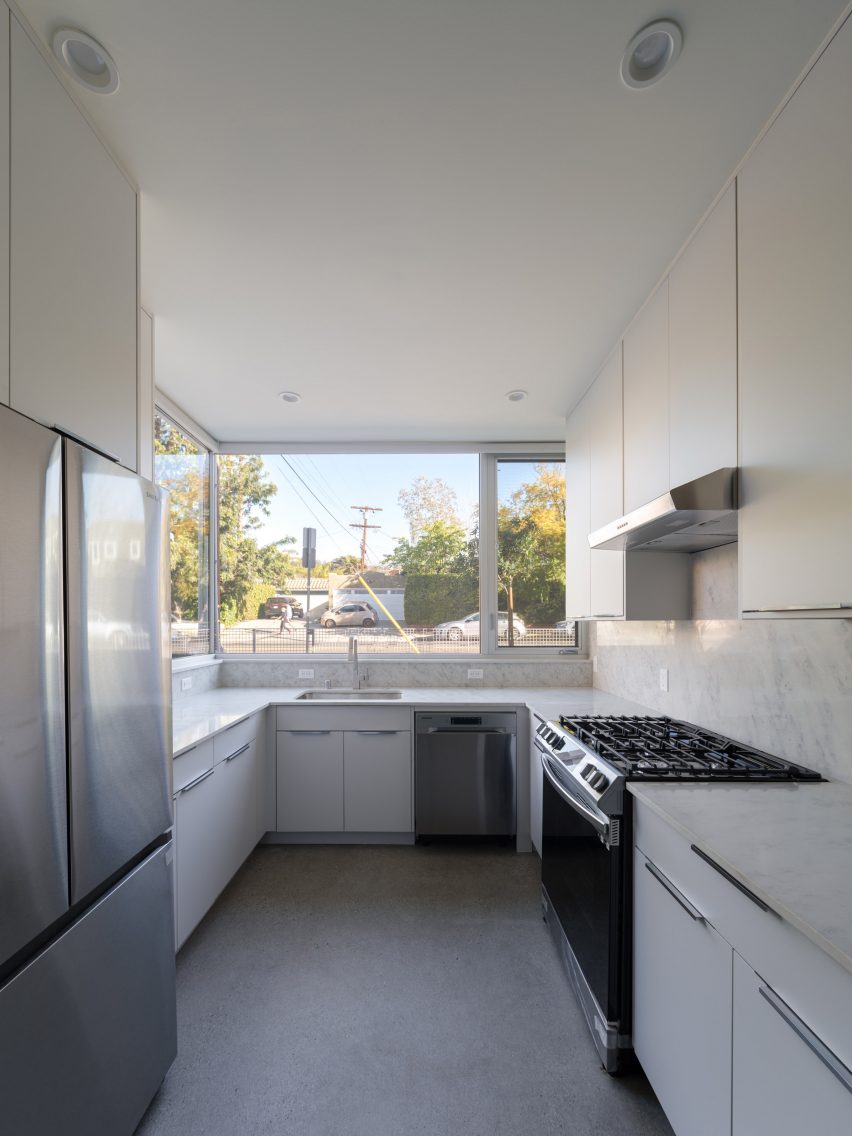
"Essentially, the material choices were made with resilience and low maintenance in mind," the team said.
"The dwelling units are at once cosy and livable, breezy with ample access to outdoors," the team added.
The building is near an earthquake fault, which is not uncommon in Los Angeles. In response, the building has a "mat" foundation that consists of a two-foot-thick (61-centimetre) concrete slab.
Other projects by Yu2e include a housing project in west Los Angeles that involved the transformation of two properties into a six-unit complex with outdoor space. The project made the longlist in the housing category for the 2022 Dezeen Awards.
The photography is by Taiyo Watanabe.